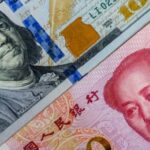The yen hovered around 5-year lows against the US dollar, as a report by ADP revealed the US private sector added the largest number of workers since January 2012.
Having reached a session high at 105.12 at 07:45 GMT, USD/JPY traded at 104.90 at 13:43 GMT, gaining 0.28% for the day. Support was likely to be received at January 7th low, 104.18, while resistance was to be encountered at January 2nd high, 105.44, also the pairs strongest since October 2008.
The greenback was supported after a report by the ADP research institute revealed the US private sector added 238 000 workers in December, the most since January 2012, defying analysts projections of a decrease to 200 000 from 215 000 workers in November. The US Labor department is scheduled to release official non-farm payrolls data on January 10th.
On Tuesday, the US dollar received support after the US Commerce Department reported that the US trade deficit narrowed to $34.25 billion in November, defying analysts’ projections that the trade deficit will widen to $40.00 billion. In October the US trade deficit was downwardly revised from $40.64 to $39.33 billion.
Data showed that the US imports declined 1.4% to $229.1 billion, while exports rose 0.9% to a record high $194.9 billion.
Investors attention turned to the release of the Federal Reserve minutes from its last meeting.
The recent upbeat data reinforced speculation that Fed might decide to taper its stimulus program further, providing further support to the greenback.
The Federal Reserve Bank said on December 18th that it plans to reduce its monthly bond purchases in January to $75 billion from $85 billion. According to the median estimate of economists surveyed by Bloomberg on December 19th, the Federal Reserve may reduce the purchases in $10 billion increments over the next seven meetings, before ending the program, which tends to devalue the US currency, in December 2014.
“Assuming the economic recovery plays out as we expect, we will likely continue to reduce the pace of those purchases, and eventually eliminate them, over this year,” said yesterday San Francisco Fed President John Williams, cited by Bloomberg.
Meanwhile, the yen was pressured yesterday, after BoJ released a report on the nation’s monetary base. According to the data, the Japanese monetary base, which measures the supply of money by the central bank, surged by almost 47% in December from a year earlier, reaching a record of 193.5 trillion yen or $1.85 trillion. The Japanese central bank changed its policy target from interest rates to monetary base in April and is attempting to raise it to 270 trillion yen by the end of the year from December 2012.
“All the monetary easing that the BOJ had announced earlier last year seems to be on target for now,” said Divya Devesh, the Singapore-based foreign-exchange analyst at Standard Chartered Plc., cited by Bloomberg. She also added that: “There’s definitely a very strong monetary policy divergence, which will also be a very powerful driver of dollar-yen.”
The yen slid 18% last year on unprecedented monetary stimulus form the central bank of Japan. The currency remained under pressure amid speculation the BoJ will need to expand its stimulus program further in the coming months, if it wants to achieve the target of 2% inflation by late 2015.





